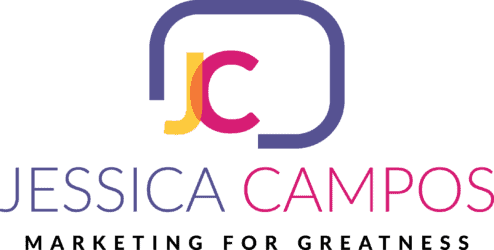
- August 20, 2022
- 11:24 am
The Case Of Why You Should Create An Online Course (One That Sells)

No matter where you are in your life or career, you have something to teach the world. Perhaps you don’t have all the details today, but the idea of not having to sell your time to make money is getting you curious.
And, you’re not alone. A recent study showed that nearly 60% of Americans would take an online course if it fits their schedule and interests, but only 10% have actually done so.
Assuming you have the time and interest in creating an online course, let’s explore the case for why this is a great
The pros of creating an online course
1 – The barriers to entry are low.
In the past, creating an online course required expensive software and hosting platforms. But now, there are platforms like Teachable that make it easy and affordable to get started. You can create and host your course on their platform without any upfront costs.
2 – You can reach a global audience.
With an online course, you can reach people all over the world. You’re not limited by geographic location like you are with in-person courses or events.
3 – There are existing ecosystems that will help you reach the audience and sell your course.
Platforms like Teachable have built-in audiences of people who are looking to learn. And, they also handle all of the marketing and payment processing for you. This means that you can focus on creating great content for your course.
4 – The upcoming generations are very receptive to learning online.
If you’re thinking that online courses are a fad, think again. The latest data shows that e-learning is here to stay. In fact, the global e-learning market is expected to reach $325 billion by 2025.
Who learns online?
Data shows that people of all ages are learning online. In fact, according to the latest data from the US Department of Education, over 6 million students took at least one online course in 2016.
The breakdown by age group is as follows:
– Under 18: 2.6 million students (17%)
– 18-24: 3.1 million students (20%)
– 25-34: 1.6 million students (10%)
– 35-44: 1.2 million students (8%)
– 45-54: 0.9 million students (6%)
– 55 and older: 1.0 million students (7%)
All of the above reasons should be getting you excited about creating an online course, but there’s one more important factor to consider…
5 – It’s highly profitable.
While the average American worker makes $44,564 per year, the top 1% of course creators are making over $200,000 per year. In fact, some of the top online course creators are making millions of dollars per year.
How much can you charge for your course?
It depends on the length and depth of your course, but the average price of an online course is between $97 and $997.
Of course, there are always exceptions to the rule. And you will see lots of courses for FREE. They are great for lead generation.
The bottom line is that creating an online course is a great way to make money and allow you to work remotely – indefinitely. You are the creator of your own economy.
So the next question is: how do you actually build a real business from your courses?
A course business is part of the CAAS Industry (Content As A Service).
SAAS vs CAAS? What’s the difference?
What is SAAS?
The software-as-a-service (SaaS) model has become a popular way for companies to consume and pay for business software. SaaS represents a new category of software that delivers applications over the web. Rather than purchasing, installing, and maintaining complex on-premises software, organizations can now subscribe to simple, easy-to-use applications that are always up to date and accessible from any device with an internet connection.
What is CAAS?
Content as a service (CaaS) is a cloud-based content management system (CMS) that provides users with on-demand access to a library of digital content, including articles, videos, images, and more.
CaaS platforms are similar to other types of SaaS applications in that they are delivered over the internet and can be accessed from any device with an internet connection. However, CaaS platforms differ from other types of SaaS applications in that they focus exclusively on content management.
While there are many different CaaS platforms available, they all share a common goal: to make it easy for users to create, manage, and deliver digital content.
The benefits of using a CaaS platform include:
– On-demand access to a library of digital content
– Ability to create, manage, and deliver digital content
– Ability to customize the look and feel of your content
– Increased efficiency and productivity
If you’re looking for a way to create, manage, and deliver digital content, then a CaaS platform is a great option.
There are many different CaaS platforms available, but not all of them are created equal. When choosing a CaaS platform, it’s important to consider your specific needs and requirements.
Some of the things you should look for in a CaaS platform include:
– Ease of use: The platform should be easy to use, even if you’re not a tech-savvy person.
– Content Library: The platform should have a library of digital content that you can access on demand.
– Ability to customize: The platform should allow you to customize the look and feel of your content.
– Increased efficiency: The platform should help you increase your efficiency and productivity.
– Marketplace features: The platform should have marketplace features that allow you to sell your courses.
The bottom line is that if you’re looking for a way to create, manage, and deliver digital content, then a CaaS platform is a great option. When we were exploring all the CaaS in the market: Kajabi, ClickFunnels, Teachable, Simplero, Thunkific, WordPress Plugins, and Kartra, we decided to go with Kartra. Kartra has offers the best SEO features and is great for technical SEO. If you’re in the market for a CaaS platform, try Kartra for free.
Tips To A Profitable Online Course
1 – Find an audience that is eager to learn. There’s no reason for you to convince people about why they should learn something.
2 – Before creating the course, find similar courses and do some ethical “cyberstalking”. Pay attention to their teaching style, platform, and most importantly, how they engage with their students.
3 – Use an evergreen model to ensure long-term profitability. You certainly don’t want to create a course that becomes obsolete within months.
4 – Create content marketing that helps you gain brand authority. This will make people want to buy your courses because they trust you.
5 – The key to selling courses is not to be too salesy. Instead, focus on providing value and helping people reach their goals.
6 – Use an email list to increase course sales. This way, you can stay in touch with your students and promote new courses to them.
7 – Offer a money-back guarantee to increase course sales. This will help you build trust with your audience and make them feel more comfortable buying your courses.
8 – Provide bonuses and other incentives to people who buy your courses. This will help you increase course sales and keep your students happy.
9 – Focus on giving your users a stellar customer experience. This will help you increase course sales and reduce refunds.
10 – Don’t create a course until you have students who are ready to learn from you. Offer mini sessions for free so you can test your content with a real audience. Then you create paid content to expand from your free mini sessions. By doing this, you will be creating content for an audience that is ready to learn from YOU. This is the key to building profitable online courses.
Creating and selling a course can be a great way to make money online. However, it’s important to keep in mind that not all courses are created equal. In order to create a successful and profitable course, you need to focus on providing value, engaging with your students, and using marketing strategies that will help you sell your courses. And sometimes, a profitable course is one that you give away for free, as part as your customer acquisition costs. Long term, this can be a profitable activity.
If you follow these tips, you’ll be well on your way to creating a profitable online course. Just remember that it takes time, effort, and dedication to succeed. So don’t give up and keep moving forward!
Done for you course creation services:
Hiring a team that can offer a done-for-you course creation services can save you time and energy; and most importantly, will cut your learning curve.


